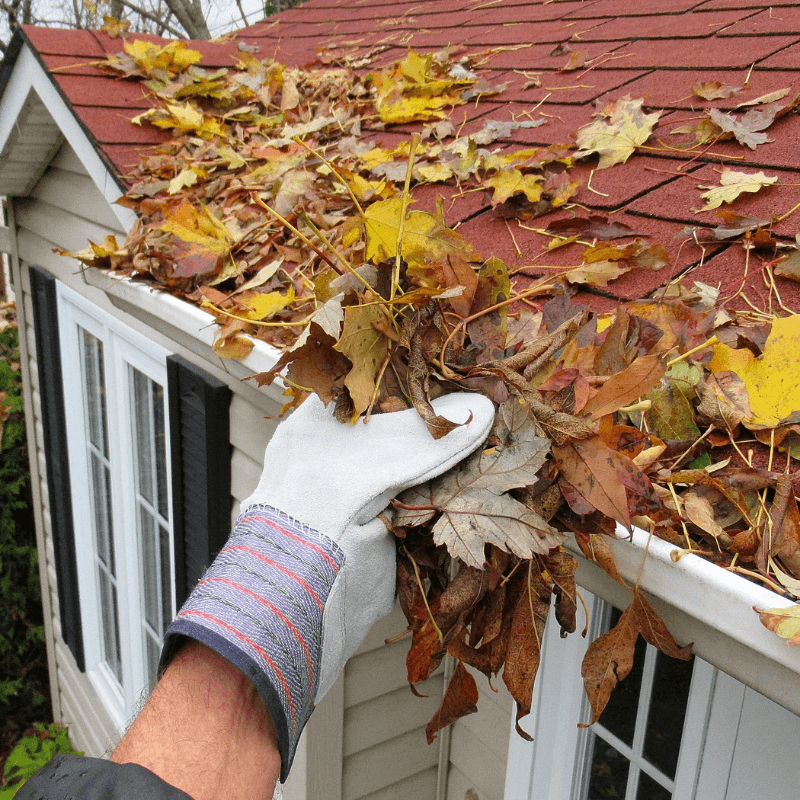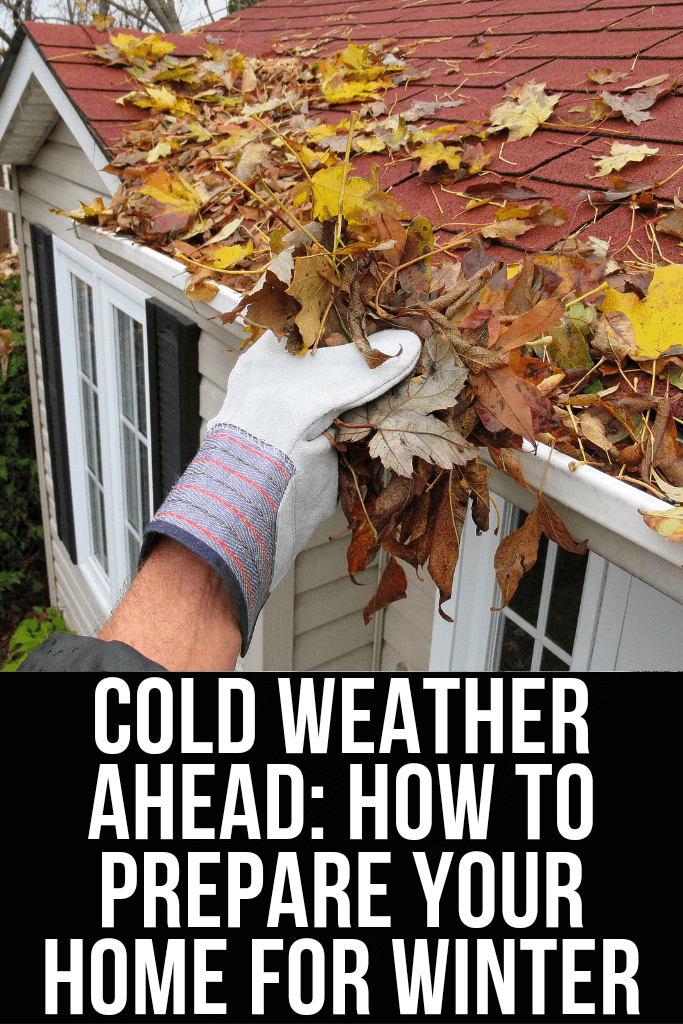Cold Weather Ahead: How to Prepare Your Home for Winter
Get ready for the cold weather ahead! Learn how to prepare your home for winter with our comprehensive guide. From insulating your home to maintaining heating systems and protecting plumbing, discover essential tips to ensure a cozy and energy-efficient winter season. Don't let the chill catch you off guard – start winterizing your home today!
Prepare Your Home for Winter
As the days grow shorter and the temperatures drop, it's time to start thinking about preparing your home for the upcoming winter season. Taking proactive steps to winterize your home not only ensures your comfort but also helps you save on energy bills and prevent potential issues. In this article, we'll guide you through the essential steps to get your home ready for the cold weather ahead.
Insulating Your Home
One of the key aspects of winter preparation is insulating your home to keep the warmth in and the cold out. Proper insulation not only helps maintain a cozy environment but also reduces energy waste and saves you money on heating bills.
Sealing Air Leaks
Before the winter chill sets in, it's important to identify and seal any air leaks in your home. Drafty areas can significantly impact your heating efficiency, causing your heating system to work harder and consume more energy than necessary.
- Identifying Drafty Areas
Start by inspecting your home for air leaks. Common culprits include gaps around windows and doors, electrical outlets, and pipes. Feel for any noticeable drafts or use the back of your hand to sense air movement.
Once you've identified the drafty areas, it's time to seal them up. Weatherstripping is an effective method to seal gaps around windows and doors. Choose the appropriate type of weatherstripping for each application, such as adhesive-backed foam tape or V-strip weatherstripping.
Caulk is another valuable tool for sealing air leaks. Apply caulk around windows, door frames, and any other areas where you notice gaps or cracks. Silicone caulk works well for exterior applications, while latex caulk is suitable for indoor use.
Insulating Windows and Doors
Windows and doors are notorious for letting cold air in and warm air escape. By properly insulating them, you can create a barrier against the cold and improve the energy efficiency of your home.
- Installing Thermal Curtains
Investing in thermal curtains can make a significant difference in maintaining a warm and cozy home during winter. These curtains are designed with insulating materials that help block drafts and reduce heat loss through windows. Install thermal curtains in your main living areas and bedrooms for maximum comfort.
- Using Draft Stoppers
Draft stoppers, also known as door snakes, are simple yet effective tools to prevent cold air from entering your home under doors. You can purchase draft stoppers or make your own by filling fabric tubes with rice, dried beans, or sand. Place them against the bottom of exterior doors to seal gaps and keep cold drafts at bay.
Heating Systems Maintenance
Your heating system is the lifeline of your home during winter. To ensure it operates efficiently and reliably throughout the season, proper maintenance is essential.
Checking and Cleaning Furnace or Boiler
Before the cold weather hits, it's crucial to inspect and clean your furnace or boiler. A well-maintained heating system will provide optimum warmth while reducing the risk of breakdowns.
- Hiring a Professional or DIY
Consider hiring a professional to inspect and service your furnace or boiler. They will clean the system, check for any potential issues, and ensure proper functioning. If you have the necessary expertise, you can choose to perform the maintenance tasks yourself. Consult the user manual or online resources for specific instructions based on your heating system.
- Replacing Filters
Clean and replace the filters in your heating system regularly. Dirty filters can restrict airflow, reduce efficiency, and lead to premature wear and tear. Check your system's filters monthly and replace them as needed to maintain optimal performance.
Inspecting and Servicing the Fireplace
If you have a fireplace, it's important to inspect and service it before winter arrives. Fireplaces not only provide warmth and ambiance but also pose potential safety hazards if not properly maintained.
- Chimney Cleaning and Inspection
Schedule a professional chimney sweep to clean and inspect your chimney. Over time, creosote, debris, and animal nests can accumulate, increasing the risk of chimney fires or blockages. A thorough cleaning will ensure proper ventilation and reduce the chance of hazards.
- Stocking Up on Firewood
If you rely on a wood-burning fireplace, ensure you have an adequate supply of seasoned firewood. Properly seasoned wood burns more efficiently, producing more heat and less smoke. Store the firewood in a dry and covered area, protecting it from moisture and pests.
Preparing Plumbing and Pipes
Frozen pipes can cause extensive damage to your home during winter. Taking preventive measures to insulate and protect your plumbing system will safeguard against costly repairs and inconvenience.
Insulating Exposed Pipes
Exposed pipes in unheated areas, such as basements, attics, and crawl spaces, are prone to freezing. Insulating these pipes is a crucial step in winterizing your home.
- Using Pipe Insulation Sleeves
Wrap exposed pipes with insulation sleeves to prevent freezing. These sleeves are readily available at hardware stores and can be easily installed. Choose insulation sleeves with the appropriate thickness for your pipes, and ensure a snug fit.
- Wrapping Outdoor Faucets
Outdoor faucets are vulnerable to freezing temperatures. Before winter arrives, disconnect hoses and drain any water from outdoor faucets. Use faucet covers or insulating tape to wrap the faucets, providing an extra layer of protection against freezing.
Draining and Winterizing Outdoor Irrigation Systems
If you have an underground sprinkler system or other outdoor irrigation systems, it's essential to drain and winterize them before freezing temperatures set in.
- Shutting Off Water Supply
Locate the main shut-off valve for your outdoor irrigation system and turn it off. Thiswill prevent water from entering the system and freezing inside the pipes, which can lead to costly damage.
- Blowing Out the Sprinkler Lines
To completely remove any remaining water from the irrigation system, use an air compressor to blow out the sprinkler lines. Start by connecting the compressor to the system's mainline, then open each zone one at a time to allow the compressed air to clear out the water. Ensure all the water is expelled from the system to prevent freezing and potential pipe bursts.
Winterizing the Exterior
Preparing the exterior of your home for winter not only protects your property but also enhances its durability and longevity. Taking care of key areas can prevent damage caused by snow, ice, and freezing temperatures.
Cleaning Gutters and Downspouts
Clogged gutters and downspouts can lead to water backup and ice dam formation, causing potential water damage to your home's exterior and foundation.
- Removing Debris
Before winter arrives, clear out any debris, leaves, and twigs from your gutters and downspouts. Use gloves and a sturdy ladder to safely reach and clean them. Ensure that the downspouts are clear and allow water to flow freely away from your home.
- Ensuring Proper Drainage
Once your gutters and downspouts are clean, check their functionality. Make sure they are securely attached and sloping properly to allow water to drain effectively. Consider installing gutter guards to prevent future debris buildup and minimize maintenance.
Protecting Outdoor Furniture and Equipment
Cold weather can be harsh on outdoor furniture, tools, and equipment. Proper protection and storage can extend their lifespan and save you from costly replacements.
- Storing or Covering Outdoor Items
If possible, store outdoor furniture, grills, and other equipment in a covered area such as a shed or garage. If storage space is limited, use waterproof covers to protect these items from snow, ice, and moisture. Ensure the covers are secured tightly to prevent wind damage.
- Treating Wooden Surfaces
Wooden surfaces, such as decks and fences, are susceptible to damage from winter weather conditions. Apply a protective sealant or stain to these surfaces before winter arrives. This will provide a barrier against moisture and prevent rotting or warping.
Emergency Preparedness
While we hope for the best, it's important to be prepared for unexpected emergencies during winter. Creating an emergency kit and having a plan in place will help you and your family navigate any unforeseen situations.
Assembling an Emergency Kit
An emergency kit should contain essential supplies to sustain you and your family in case of power outages or other emergencies.
- Flashlights, Batteries, and Candles
Include flashlights with extra batteries in your emergency kit. Battery-powered lanterns or candles can also provide light during power outages. Remember to exercise caution when using candles and never leave them unattended.
- Non-perishable Food and Water
Stock up on non-perishable food items such as canned goods, granola bars, and dry snacks. Ensure an ample supply of drinking water for each family member, accounting for at least one gallon per person per day. Don't forget to include a manual can opener and disposable utensils.
Creating a Winter Storm Plan
Having a winter storm plan in place will help you stay informed and take necessary precautions during severe weather conditions.
- Communication and Emergency Contacts
Establish a communication plan with your family members and designate a specific meeting point in case of evacuation. Compile a list of emergency contacts, including local authorities, utility companies, and medical professionals, and keep it easily accessible.
- Understanding Local Advisories
Familiarize yourself with the winter weather advisories and warnings issued by your local meteorological services. Stay updated through reliable sources to know when to take action, such as staying indoors or evacuating if necessary.
Preparing your home for winter is a proactive approach to ensure your comfort, safety, and energy efficiency during the cold months. By insulating your home, maintaining your heating system, protecting your plumbing, winterizing the exterior, and being prepared for emergencies, you can enjoy a cozy and worry-free winter season. Take the time to complete these essential tasks, and you'll be ready to face the cold weather ahead with confidence. Stay warm and enjoy the delights of the winter season!





